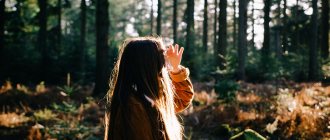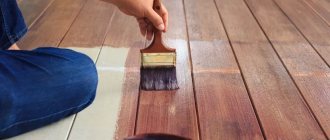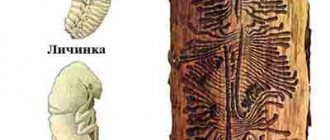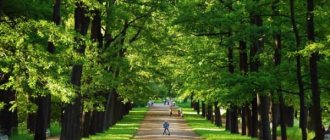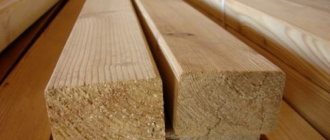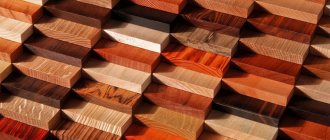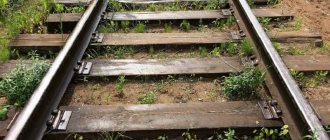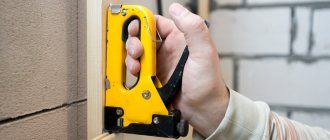Main Differences
Evergreen coniferous trees are very similar in appearance, but they have quite a lot of differences. First of all, you should take into account that they grow in different natural zones.
Spruce is a more frost-resistant type of coniferous tree , more common in the northern hemisphere, often growing as a dense forest or as part of a mixed forest. It can grow up to 40 meters up and reaches no more than 2 meters in width, which is why most often they are easily blown away by strong gusts of wind.
Fir, on the other hand, is not so frost-resistant, so it grows mainly in the Caucasus , in the southern part of Siberia, and is also common in the Primorsky Territory. It grows up to 60 meters in height, the first decade of growth is minimal - about 10 cm per year. At the same time, it is very sensitive to climate and the amount of moisture in the soil. The crown is shaped like a pyramid, the trunk is straight and smooth.
Douglasia green
(Another name: green pseudohemlock) (Genus “Douglasia”)
A tree up to 125 m high and 5 m in diameter. Lives 500-800 (1500) years. Brought to Russia in 1827. The trunk is straight, columnar, full of wood, cleared of branches by 55-75%, and therefore gives a large yield of clean lumber. The crown is dense, broadly conical or broadly pyramidal, pointed. The branches are irregularly ring-shaped. The needles are perennial (up to 8 years), placed spirally on elongated annual shoots. The age of maturity of Douglas finch reaches 10-20 years. Fruits every year. This breed is moderately sensitive to heat. It does not tolerate severe frosts, heat, late spring frosts, long droughts and dry winds.
How to tell the difference?
There are several basic signs that will help you determine exactly which tree is in front of you: spruce or fir.
- Needles. If we compare the needles of fir and Christmas tree, we can say that fir needles are much softer, non-thorny, have white tints on the sides, while spruce needles are prickly, have a tip that resembles a real needle, they are much harder than those of fir.
The needles are also arranged differently: in fir they are planted much more often than in spruce.
Also, the needles of trees differ in size: those of fir are longer, and those of spruce are short. Life expectancy also varies: fir needles live about 12 years longer.
- Crown. The shape of the fir resembles a regular pyramid, while the shape of the fir tree has an asymmetry.
- Smell. The smell of a Christmas tree evaporates much faster, while that of a fir lasts a long time.
- Cones. In spruce trees they hang, and in fir trees they look up, resembling rows of candles. After ripening, fir cones crumble into particles, leaving a bare core, while on spruce, after ripening, the cone just begins to open, without crumbling anything.
- Branches. Fir trees look flat due to the fact that they are densely planted with needles parallel to each other; spruce needles grow chaotically, so the branches are visually more voluminous.
- Bark. Fir has a very smooth bark, without any inclusions or irregularities, while spruce, on the contrary, has a rough, very thin, resinous trunk. The color of the bark is ash-gray, while that of fir is light grayish.
- Seeds. They are very similar in appearance, but the seeds of a fir tree are firmly connected to the wing, while those of a spruce tree are easily separated from the wings.
As you can see, fir and spruce have a lot of differences that can be noticed if you try. It should also be noted that the fir tree can reproduce by layering.
Description of trees
The difference in growth, by the way, is not accidental - it directly indicates what conditions each tree prefers. A tall pine tree reaches out to the sun with all its might: although in the places where it grows it is not distinguished by its ability to truly warm, but the tree tries to squeeze the maximum out of what nature can give. The spruce tree cannot be called a baby, but still its goals are completely different - it prefers shade, and therefore does not strive to outgrow its neighbors.
Both trees are considered evergreen because they do not have leaves - instead they are covered with dense needles. At the same time, most people determine the difference precisely by this, since the fir tree is short, but richly green, while the pine puts all its efforts into increasing its length, “forgetting” about the bright pigmentation. In addition, in pine trees a partial fall of needles is observed during a certain period, but for spruce this phenomenon does not have a seasonal expression.
Difference in care
Both trees are shade-loving and do not require special care. But there are several points that you should know and follow, otherwise you may be left without beautiful vegetation.
To plant a fir tree, you should choose an open area; the presence of a slight shade is possible. The composition of the soil should be neutral, good drainage is encouraged. Unlike fir, spruce is not as demanding on the soil and planting site. This is its advantage. A shady place and soil with a high moisture content are suitable for spruce. In addition, it is more frost-resistant, this can also be considered an advantage, since most latitudes of our country have cold winters, and spruce easily tolerates severe frosts even as a young seedling.
The main difference between these two trees is that they adapt to the terrain differently. When purchasing, you should pay attention to the root of the tree: it must be closed.
Otherwise, it may dry out, which will put the normal survival of the seedling into question.
For fir, the amount of moisture in the soil is not important. These seedlings are usually well rooted.
The fir crown does not require formation; it grows independently in the correct shape in the form of a pyramid. And the greenery of the Christmas tree needs to be trimmed, dried trunks removed, and the length evened out.
Fir easily tolerates dry weather, and the tree should always be moistened.
Fir requires constant feeding until the age of 3, but the Christmas tree does not need such nutrition.
After comparing all the criteria, we can conclude that each tree is good in its place. For example, it is better to use fir for decorative growing, while ordinary spruce is ideal for making furniture and construction. It should also be noted that fir is more demanding in care, so its cultivation requires greater physical and material costs.
How to distinguish fir from spruce, see below.
The difference between fir and spruce can be found by examining the crown in detail: the structure and size of the needles, the color of the branches, and the growth of the cones are different. The distribution area of trees is different, so the requirements for the place of growth are also different. Visually, the trees are very similar to each other.
Coniferous wood: pine or larch?
The most popular material in construction is coniferous wood. This choice is justified, because it has a large number of positive qualities, due to which products made from softwood lumber last for many years. In this topic we will talk about the differences and advantages of coniferous wood, and also talk about its species.
Breeds, advantages and differences
The most popular softwoods include larch, pine, cedar, spruce and fir.
Popular articles Chanterelle mushroom: how long it can be stored in the refrigerator, in what form to store
Larch
It is distinguished by its long service life, sweet and strong aroma, as well as the content of volatile substances that erode throughout the entire period of use and have a positive effect on human health, protecting against colds and infectious diseases.
This is the most popular building material. Pine has a very smooth and straight trunk and can last for many years. In addition, it also contains volatile substances. To process pine, it does not require much effort, since it is quite easy to process wood without losing its positive properties.
Norway spruce
Spruce is also a popular lumber. It is resistant to cracks and rot, but is slightly inferior in density and strength to pine. The pleasant smell of spruce, which allows you to feel all the delights of the forest, has a noble effect on the body. The breed is unpretentious in woodworking, polishing and paintwork.
Cedar is soft and easy to work with. The main advantage can be considered that after the log house it dries quickly, but at the same time retains its strength, density and reliability for many years. Cedar is very resistant to damage by fungi and insects. The pleasant smell of the species makes lumber more in demand.
Fir is also included in the types of coniferous wood. It is not very popular in the construction market, as it is susceptible to insects and fungi, although it is similar to spruce. Also, fir does not have resins, which has a detrimental effect on its antiseptic properties. The breed is quite soft, easy to process and suitable for interior decoration of some rooms.
The most basic difference between all coniferous trees is the presence of resins. Resins impart many beneficial qualities to the material. They serve as a wonderful natural component for moisture and heat insulation of a room. This ensures minimal costs and savings when choosing a breed. The resin also imparts antiseptic properties. The tree will not be attacked by pests, fungi and atmospheric phenomena.
A little about our company
The lumber production company LesMoroy offers to buy lumber from coniferous wood, namely larch and pine. These rocks have proven to be the best in the construction industry. They are used everywhere: they cover ceilings, partitions and walls, produce interior elements of premises, furniture, and build houses. This is not a complete list of the uses of coniferous wood.
We employ only experienced specialists, each of whom knows a lot about woodworking. The material undergoes high-quality processing, thanks to which it can last for many years. To buy coniferous wood, call us at 8 (917) 518-55-01.
What is the difference between spruce and fir
Evergreen coniferous crops belong to the Pine family, this is where their similarities end; representatives belong to different genus. Frost-resistant spruce (Picea) is common in the Northern Hemisphere. In the wild it forms dense forests. In Central Europe it is part of mixed forest belts. Spruce grows up to 40 m tall and is long-lived. Forms a pyramidal crown, straight trunk, light brown with a gray tint, scaly, rough bark.
Fir (Abies) is less frost-resistant, is demanding on the place of growth, the tree requires high humidity and a certain soil composition. In Russia it is less common than spruce. It differs in the speed of vegetation. Up to 10 years of age, growth is minimal. It grows up to 60 m, its life expectancy is much longer, this is another characteristic by which representatives of conifers differ. Found in the Primorsky Territory, the Caucasus, the Far East, and the southern part of Siberia. The photo shows that the Christmas tree and fir have visual differences from each other. The fir has a regular pyramidal crown, a straight, smooth, dark gray trunk. It does not have resin channels; the resin accumulates on the surface of the branches and trunk in small bubble pockets.
Christmas trees are used as a building material for furniture, houses, and musical instruments. The white color allows the wood to be used for making pulp and paper. The resin is used in the pharmaceutical industry.
Fir is a more fragile wood; it is used only for paper production. The structure of the trunk is not resinous, and is short-lived as a building material. This property has found application in the manufacture of food containers. It is not widely used in medicine.
Yew
(Genus "yew")
There are few plants that are so often mentioned in legends as the yew (Taxus boccata). There must be something special about this tree, which can live for over 5,000 years, whose wood does not rot for centuries and sinks in water like a stone. At the age of 100 to 150 years, yew trees reach a height of about 10 meters and a diameter of 20 to 25 cm.
Previously, the yew was very common, as evidenced by the name of the Tisza River. For its valuable wood, the yew was heavily cut down in the years 1400-1700. Because of its decorative, hard and rot-resistant wood, furniture, dishes, jewelry, and even cannonballs were made for the castle in Khust. Yew wood was expensive and the local population apparently paid them tribute.
In Greek mythology, according to Pliny and Dioscorides, the yew was considered the tree of death. This is true because almost all parts of the yew, with the exception of the edible red pulp of the fruit, are highly poisonous. The constituent parts of the toxin are used today in medicine in the treatment of certain diseases of the nervous system and tumors.
Which is better: fir or spruce for the New Year?
When choosing a Christmas tree or fir for the New Year, pay attention to the appearance of the tree. New Year's tree is a collective term used to decorate a spruce, pine or fir tree. Nurseries offer a variety of conifers with full characteristics. If you purchase a holiday attribute at a city fair, you need to know how conifers differ and what will last longer in a heated room.
What costs longer – a Christmas tree or a fir?
At low temperatures there is no difference between a spruce and a fir; the trees retain their needles for a long time. In a heated room, place the tree in a container with wet sand, place it away from heating devices, and constantly moisten the sand. This method helps to increase the shelf life of trees. If the conditions are met, Picea will stand for no more than 6 days and shed its needles.
Abies compares favorably with this quality; it can last for more than 1 month, maintaining its aesthetic appearance. The needles do not fall off, they just dry out. It is more difficult to purchase a tree; it is rarely put up for sale, and the price offer is much higher. Conifers differ from each other in the duration of crown preservation.
What smells stronger - spruce or fir?
Fir differs in smell from spruce, because it does not have resin channels, the enzyme accumulates on the surface of the branches. If a tree is brought into a room from the cold, the persistent smell of coniferous forest immediately spreads. It lasts a long time, more than 4 days. Spruce spreads a less intense smell and does not last more than a day. Representatives of the Pine family are also distinguished by this feature.
The difference between spruce and fir in planting and care
Externally similar conifers are radically different when planted. Open areas are chosen for fir; partial shade is allowed. The soil is neutral, well drained. Spruce is less demanding of space, which makes it stand out. Shade and moist soil are suitable for it; it grows in any soil composition. The species differ in frost resistance; spruce easily tolerates low temperatures; young seedlings do not require shelter for the winter.
They differ in their survival rate in a new place; when planting, a Christmas tree seedling is purchased with its root closed; if it dries out at the slightest level, it will not take root. Humidity is not important for fir planting material. The plant always takes root well. Care of the species differs. The fir crown does not require formation; it grows evenly, maintaining strict shapes. Spruce branches require equalization of length and removal of dry fragments. The types differ in their watering requirements. The fir root system tolerates drought well, spruce requires constant soil moisture. There are differences in the application of fertilizing, fir requires fertilizers up to 3 years of growth, the fir tree does not need additional nutrition.
Top dressing
Despite all its unpretentiousness, spruce definitely needs a supply of nutrients. Fertilizers with a high nitrogen content are strictly undesirable. They cannot be used during planting or mulching. Growth stimulation is achieved in a simpler way - using compost. In terms of 1 sq. m consume from 3 to 5 kg of compost.
It must be remembered that photosynthesis in conifers is weaker than in deciduous trees (affected by the smaller total area of foliage). A small portion of magnesium can improve it. Therefore, dolomite flour is used for liming Christmas trees, which compensates for the deficiency of this microelement.
Choosing a fertilizer that does not contain nitrogen and has a lot of magnesium is not everything. It should contain at least 10-12 microelements. Only then can fertilizing be carried out fully. The choice between Russian and imported fertilizers is not very important. It is much more important that the composition meets the basic quality criteria.
Caring for a spruce tree in winter is not too difficult - you must first of all make sure that the branches are not overloaded with snow. They may even break under stress. In the first year of development, plants must be covered. The necessary protection will be provided by an improvised “wigwam” of several stakes that are tied at the top. The resulting “hut” is filled with spruce branches or covered with film on the outside to reduce the snow load and make it more even.
